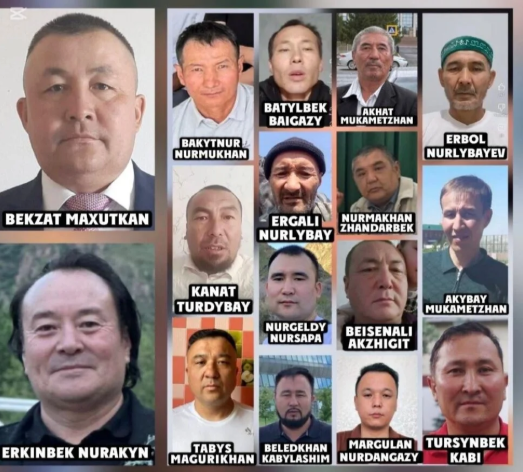Nisei: Are Second-Generation Apostates from the Unification Church Reliable? 4. Most Nisei Are Not Apostates
- info775148
- 12. 8.
- Minut čtení: 4
There are many more second-generation members who happily remain in the Unification Church than apostates who publicly oppose it.
August 12, 2025

In the previous article of this series, I discussed the distinction proposed by Canadian scholar Adam Lyons between the first “cult wars” of the 20th century and the new “cult wars” that started with the 2022 assassination of former Prime Minister Shinzo Abe in Japan.
The differences outlined are significant, making Lyons’ study both timely and important. Nonetheless, similarities exist between the first and second cult wars, particularly regarding the roles of first-generation apostates in the earlier conflict and second-generation apostates (nisei) in the latter.
Both first- and second‑generation ex-members who denounce their former religion (or, for the nisei, their parents’ faith) demonstrate the two essential traits of apostates asidentified by Bromley and others during the initial cult wars. First, they are minorities. Second, they became apostates through their interaction with the anti-cult movement.
First, apostate nisei are a minority among those who leave the religion. Although the situation calls for further empirical studies, there are indications that, just as it happens with the first-generation apostates, second-generation apostates are a minority compared to second-generation ordinary leavetakers. More nisei abandon the religion of their parents and quietly merge into mainstream society than there are nisei who become apostates.
While more quantitative data are needed, based on social media, web forums, and interviews he performed, Lyons concluded that, “The second-generation grievance narratives proliferating in the public sphere statistically represent a minority viewpoint among the total population raised in Japan’s new religious movements. Nonetheless, the popularity of these stories suggests that they reinforce normative secularism and aversion towards organized religions in contemporary Japanese society”.
American scholar Holly Folk agrees that, both in Japan and elsewhere, “The largest Second-Generation cohort are passive departers, people who are not active in the Unification movement, but who are not outspoken critics.”
More nisei happily remain in their parents’ faith than choose to leave it. Journalist Masumi Fukuda reported that many second-generation members were among the 23,486 current Unification Church believers who signed a petition opposing its dissolution, using verifiable names and addresses. In contrast, anti‑cultists gathered over 200,000 signatures in favor of the dissolution through an online petition that did not require verification.
Considering those who submitted statements in the dissolution case, gave interviews, testified in parliamentary hearings, plus one who filed an action for a name change, the number of apostate nisei who went public is eleven. Eight filed the so-called class action of July 24, 2025, seeking damages from the Unification Church. There may be some more dissatisfied nisei who did not go public, but even with these hypothetical cases included, the number would remain small compared to those who happily remain in the church or left quietly without any complaints.

Some of these apostate narratives are inaccurate. Fukuda herself refuted the claims made by Sayuri Ogawa (a pseudonym), who is portrayed, as Lyons reports, as “the public face of Unification Church nisei.” Many of Ogawa’s allegations against her parents were proven to be untrue. Lyons points out that Fukuda’s articles criticizing Ogawa are recognized internationally, particularly due to the English edition published in “Bitter Winter” and an annotated version in “The Journal of CESNUR.” However, these articles were not “cited by any of the major dailies, Japanese scholars, or the Japanese Wikipedia” in Japan, Lyons writes.
During our fact-checking of Fukuda’s articles in Italy, we received dozens of documents from her, including bank statements and photographs. The fact that Fukuda is not quoted in Japan when discussing Ogawa does not reflect shortcomings in the journalist’s research, but rather indicates pervasive pro‑apostate biases among Japanese media and scholars.
Ogawa illustrates the second trait connecting first-generation and second‑generation apostates. Instead of becoming apostates on their own, they are integrated into a subculture that opposes new religious movements, influenced by anti-cult organizations and experts. This community frequently utilizes them as public representatives.
A significant example in Japan is the many former members and nisei who filed lawsuits against the Unification Church after undergoing deprogramming. They had to take legal action to stop further confinement.
Just as the “traditional” first-generation apostates, nisei who become militant critics of the Unification Church, the Jehovah’s Witnesses, and other religions, are a minority among the larger cohorts of ex-members and nisei who abandoned their faith without publicly denouncing it or talking to the media. They are also much less numerous than the nisei who are happy to remain in their parents’ faith.
Since the apostate nisei are the only ones visible to them, most media fall into the misunderstanding of regarding the “apostates” as representatives of all ex‑members or all nisei. This is a common fallacy with dire consequences on religious liberty.

Apostate accounts should not be overlooked. However, neutrality and objectivity require a method of triangulation, where apostate reports are compared with accounts from current members of the movement, ex-members who did not become apostates, and scholars who have studied the relevant internal literature, and conducted interviews, archival research, and participant observation. A serious application of the triangulation method also means that the accused groups should be permitted to review and respond to the apostates’ allegations.
Media reports that triangulate and consider all these sources yield quality journalism, whereas those relying solely on apostate accounts produce biased narratives and tools for discrimination.
Source: bitterwinter.org









Komentáře